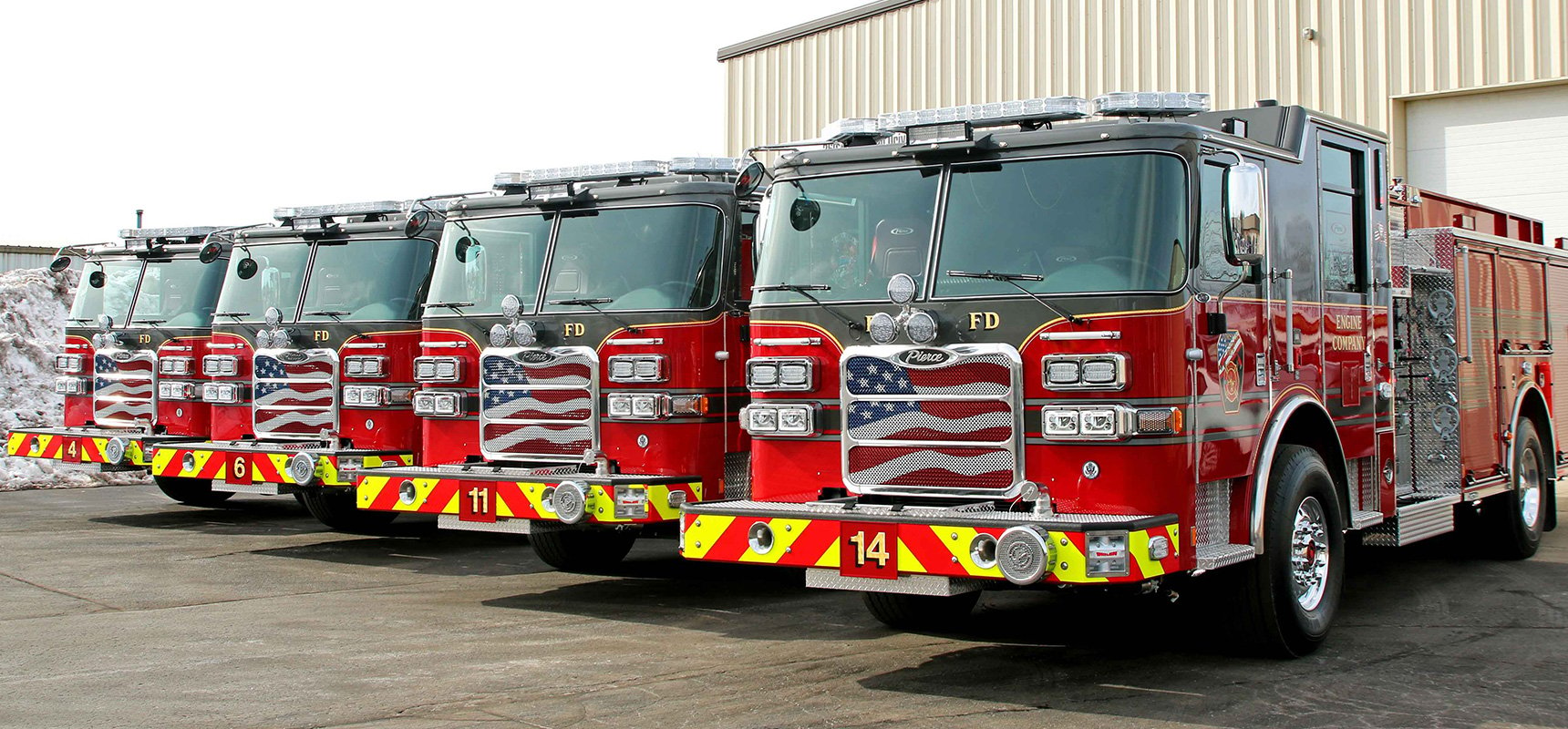 As fire truck call volumes and mileage continue to increase for fire departments globally, fire department leadership and community administrators are routinely tasked with developing apparatus replacement programs.
As fire truck call volumes and mileage continue to increase for fire departments globally, fire department leadership and community administrators are routinely tasked with developing apparatus replacement programs.
These comprehensive programs establish current and future departmental needs and are often based on critical performance features and lifecycle calculations of a department's fire apparatus fleet.
When fleets are evaluated across a number of performance metrics, many departments determine that standardizing their fleet to a single manufacturer offers both financial and operational benefits.
What key metrics should a fire department consider in an apparatus replacement plan and why should fire departments consider fire truck fleet standardization? Continue reading to learn more.
Evaluating Your Current Fire Truck Fleet
A comprehensive plan for apparatus replacement typically includes a review of current apparatus performance and future department needs. 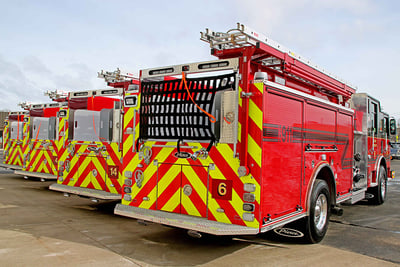 The metrics fire departments and community members review often include the following:
The metrics fire departments and community members review often include the following:
- Years of service
- Mileage
- Maintenance history
- Parts support and availability
- Out of service time
- Technology changes
- Overall cost of ownership
- Community changes
- Economic influences
With a full review of fire truck lifespans and an understanding of future needs, many communities express interest in fleet standardization. Understanding fleet standardization and the associated benefits may help your fire department determine the right course of action.
What Is Fleet Standardization?
The main principle of fire truck fleet standardization is that vehicles are of a standard make and model. With a standardized fleet program, fire trucks are manufactured according to a class of specifications that create consistency based on the needs of a fire department. This can include, for example, the type of chassis, engine, pump and frame rails, the location of compartments and equipment, the aerial device used, the graphic and component finishes and more.
Repeatability in the buying process can help streamline the bid process and support the future growth plans of communities.
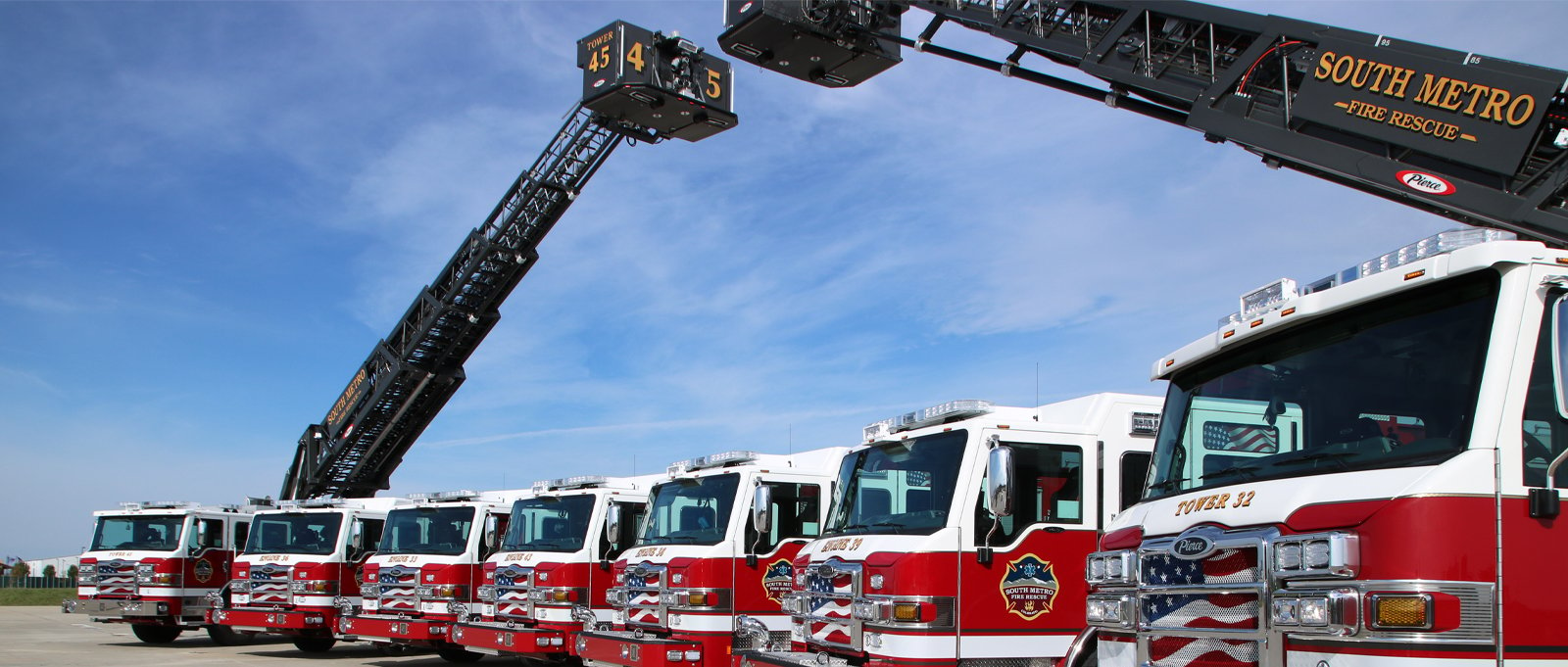
Why Do Fire Departments Standardize Vehicle Fleets?
In busy fire departments, anything deemed to improve efficiency and operations deserves consideration. That’s where fleet standardization often enters the picture. 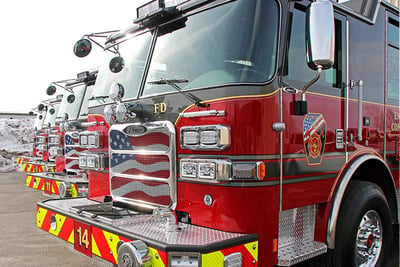 There are many inherent benefits of fire truck fleet standardization, including improvements in:
There are many inherent benefits of fire truck fleet standardization, including improvements in:
- Daily operations and muscle memory. Completing the same tasks daily results in muscle memory and the innate ability to perform tasks more efficiently. When time is of the essence, muscle memory can prove beneficial to help firefighters expedite tasks. When a fire department has standardized fleets, this muscle memory can be used regardless of the rig in use, whether frontline or reserve. Knowing where specific tools are stored and how to operate critical apparatus functions, for example, is a tremendous advantage at the scene of an emergency.
- Maintenance efficiency. With a standardized fleet, preventive maintenance becomes streamlined. Once a technician is trained on a specific apparatus, this training carries over to others in the fleet without additional certifications to understand parts and service requirements.
- Operations, training and safety. Training is time-consuming but understanding fire truck operations is critical for on-scene efficiency and safety. With a standardized fleet, additional training can often be minimized. Improvements in operations and safety go hand-in-hand when components are set up the same way on all apparatus, and the added components, like an aerial device, match existing apparatus.
- Fast Access to Parts and Service. With a standardized fleet, fire departments can stock parts more easily, knowing what parts are needed where and having them on hand to manage a number of vehicles. In addition, Pierce dealers often work directly with fire departments to stock parts on hand to support fleet maintenance needs, expediting service capabilities and getting trucks back into service faster.
- Fire Department Cost Savings. Establishing a fleet standardization program can help improve fire department cost savings in several ways, including condensed contacts, a more efficient order process, and a repeatable manufacturing process.
Learn 6 Facts You May Not Know About Pierce Parts & Product Support now.
Pierce Fleet Program
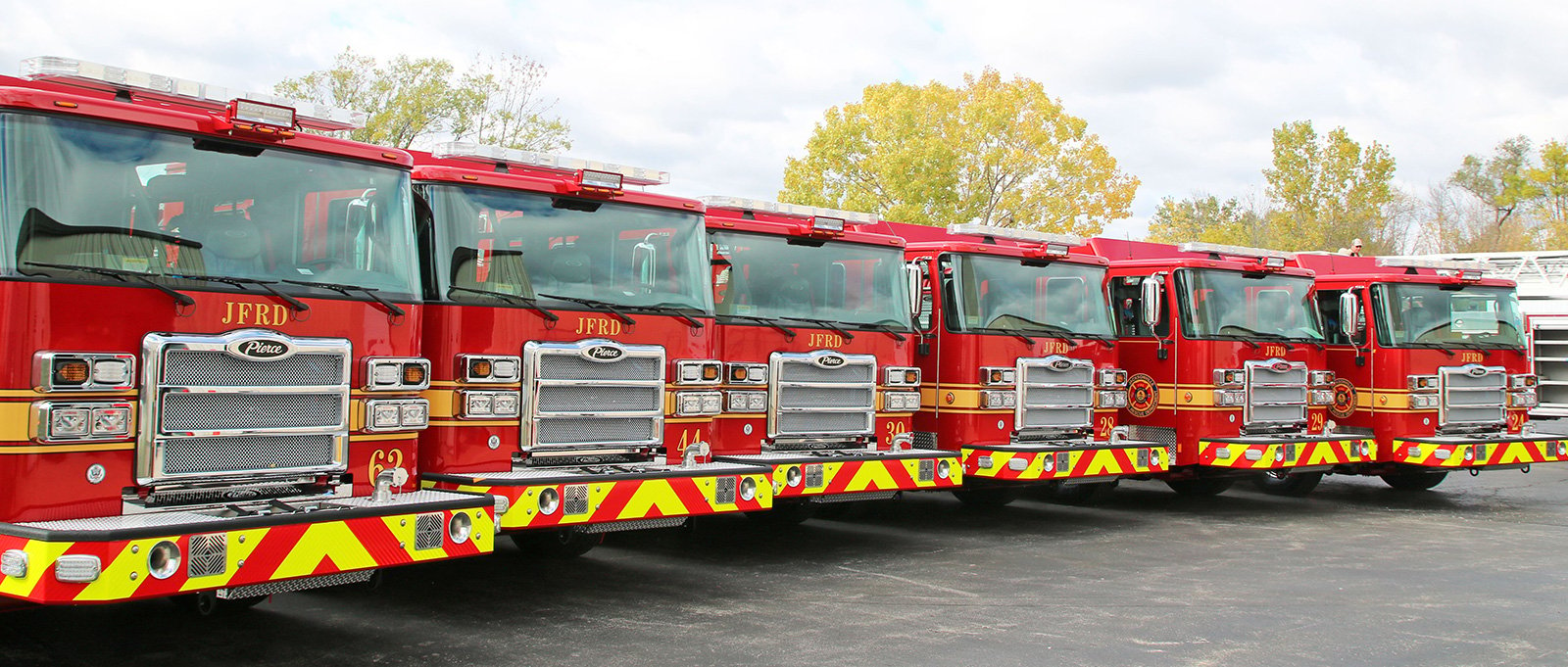 The Pierce Manufacturing Fleet Program was created on the pillars of experience, consistency and loyalty. The fleet program helps fire departments and municipalities streamline the order and manufacturing process with the guarantee of a uniform, high-quality custom apparatus every time.
The Pierce Manufacturing Fleet Program was created on the pillars of experience, consistency and loyalty. The fleet program helps fire departments and municipalities streamline the order and manufacturing process with the guarantee of a uniform, high-quality custom apparatus every time.
Additionally, fire departments that participate in the Pierce Fleet Program receive added benefits, including:
- Dedicated Regional Sales Support to manage fleet-related questions and support the design, build and delivery process.
- A Customer Support Manager to assist fleets in understanding product support improvements, improving vehicle performance and reliability and ensuring rapid responses to technical and parts support-related questions.
- Additional training and support services for custom fleet purchases.
- Training classes are provided throughout the year. Classes take place in Appleton, Wisconsin; Bradenton, Florida and Las Vegas, Nevada.
Through Pierce's Fleet Program, a consistent product and a repeatable order process help fire departments save time, money and resources.
A Consistent and Streamlined Fire Truck Order Process
To ensure consistency from build to build, Fleet orders are managed in a project management approach. The process starts with the Project Requirements Manager.
The Project Requirements Manager supports the sales and dealer teams, as well as the customer, as the vehicle moves through the build process. Collectively, the production and project managers build a relationship with every customer to understand and manage specific requests and options that are important to each fire department.
Once the build process starts, our Production Requirements Manager will review an initial truck order, or a repeat-order to establish and confirm customizations from build to build. The customer specific Production Requirements Manager then follows the order through the entire build process to capture consistency between multiple units and alignment to previous builds.
For example, fire departments may specify particular wire routings, valve controls or the placement of panels and compartments. A full review is completed of these specifications before the building process begins.
Using Pierce’s truck builder tool, the design-build team manages and tracks each step of the manufacturing process to ensure consistency from truck to truck.
The Project Requirements Manager supports the sales and dealer teams, as well as the customer, as the vehicle moves through the build process. Collectively, the production and project managers build a relationship with every customer to understand and manage specific requests and options that are important to each fire department.
Additionally, every Pierce dealership is supported by a truck ownership team that is tasked with monitoring the consistency of trucks based on geographic region. These teams understand the truck specification needs for location-based challenges, like climate, terrain, population density and more.
Through these dedicated employees and teams, Pierce provides fire departments with reliable, consistent apparatus to support fleet standardization and replacement.
Is your fire department considering a fire truck standardization or replacement program?
Reach out to your local dealer to learn more about how Pierce can support the needs of your department.